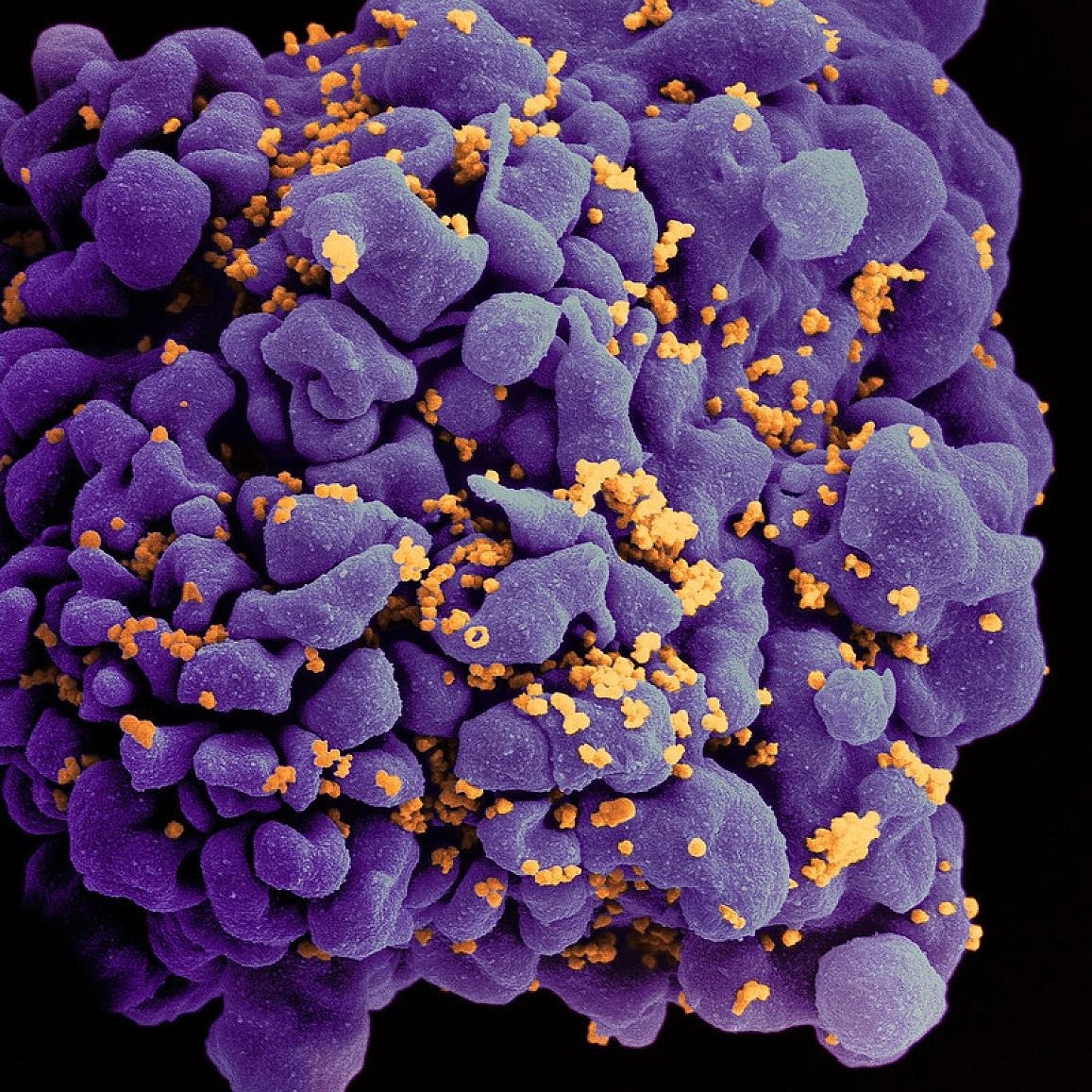Researchers from the National Institute of Allergy and Infectious Diseases (NIAID) Vaccine Research Center (VRC) and their collaborators gave a presentation recently at AIDS 2022, the 24th International AIDS Conference in Montreal.
 Scanning electron micrograph of an HIV-infected H9 T cell. Image Credit: NIAID
Scanning electron micrograph of an HIV-infected H9 T cell. Image Credit: NIAID
The presentation outlines how their use of cutting-edge innovation disclosed fresh perspectives into cellular reservoirs of HIV and what those findings could mean for the following steps in the HIV cure investigation. The National Institutes of Health involve NIAID.
Scientists working to find a cure for HIV have long sought to gain a better understanding of the HIV-infected memory CD4+ T cells that endure for years in patients receiving antiretroviral therapy.
However, due to technological limitations, it has been challenging to isolate or study these individual cells in their native state. Researchers have been unable to establish if the cells have unique qualities that HIV-cure-directed treatments may harness as a result.
Eli Boritz, MD, PhD, chief of the Virus Persistence and Dynamics Section in the VRC Laboratory of Immunology, discussed the lengthy partnership between NIAID and a bioengineering research team at the University of California, San Francisco in his presentation. Focused Interrogation of Cells by Nucleic Acid Detection and Sequencing (FIND-Seq) is the name of the proprietary microfluidic sorting method that the researchers created.
By creating millions of single-cell reaction containers in the way of water-in-oil emulsions, this technology defines gene expression patterns from uncommon cells harboring latent HIV. Messenger RNA capture and virus DNA detection can be carried out sequentially in these containers while retaining cell segregation.
The researchers used the FIND-Seq technology on blood cells from six persistently infected HIV patients who had started receiving antiretroviral therapy (ART) and had more than a year of viral suppression. The researchers compared the gene expression profiles of HIV-infected memory CD4+ T cells to HIV-uninfected memory CD4+ T cells in the same people using data generated by FIND-Seq.
The gene expression patterns connected to the suppression of several processes in the HIV lifecycle as well as to cell survival and proliferation were shown to be distinct between HIV-infected CD4+ T cells and their uninfected counterparts. The researchers claim that these findings show that the memory CD4+ T-cell reservoir infected with HIV is a separate cell type that may be particularly vulnerable to particular targeted therapy.
In this aspect, the finding supports recent interest among researchers in enhancing latency-based latency reversal-based HIV cure techniques by adding medications that remove blockages at numerous HIV lifecycle events and by combining these with treatments that increase physiologic cell death.